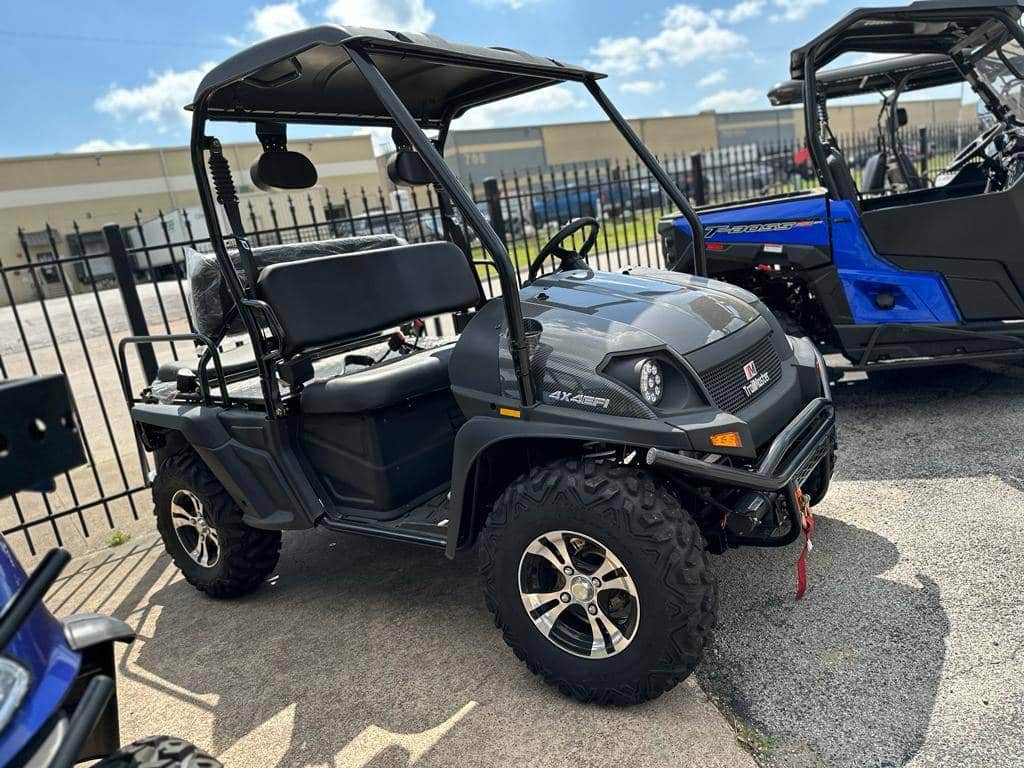 No. A low-speed vehicle (LSV) is still considered a motor vehicle and cannot be driven on California sidewalks or on bike paths. They should be operated on roads that have a speed limit of 35mph or less.
No. A low-speed vehicle (LSV) is still considered a motor vehicle and cannot be driven on California sidewalks or on bike paths. They should be operated on roads that have a speed limit of 35mph or less.
An LSV can travel at speeds that can harm a pedestrian or a cyclist. Drivers should take care never to be in a spot that can put a non-motorist in danger. Knowing California’s restrictions on LSVs can help keep passengers and those walking on foot much safer.
Low-Speed Vehicle Use in California
California treats low-speed vehicles like motor vehicles. An LSV, also known as a neighborhood electric vehicle (NEV), is a small, four-wheeled cart usually powered by an electric motor. They may look like golf carts, but LSVs generally go faster and weigh more. LSVs, with passengers, will weigh 3,000lbs or less.
LSVs should be able to reach speeds between 20mph and 25 mph, but not over 25mph. If they can go faster, they’ll be classified as a regular car and will need to be equipped with far more in the way of safety devices. For more on LSV safety requirements, you can check out our California LSV laws page here.
LSVs Must Stay Off California Sidewalks
You should think of your LSV as a car, especially if you’ll be using it to travel anywhere other than your own property. To travel on any public road you’ll need a driver’s license, car insurance, and registration for a license plate.
Since California grants you the right to drive on some roads with your neighborhood electric vehicle, they will hold you responsible for vehicle codes written for cars, trucks, and SUV owners. Those codes include strict rules against the use of sidewalks.
CVC 21663.
“Except as expressly permitted pursuant to this code, including Sections 21100.4 and 21114.5, no person shall operate or move a motor vehicle upon a sidewalk except as may be necessary to enter or leave adjacent property.”
Other Paths for LSVs
LSVs are often used in neighborhoods such as golf communities and retirement communities. These neighborhoods may have special paths built for golf carts, LSVs, and NEVs. Golf paths may be okay to travel on depending on the rules in your community.
Others may use their LSVs to travel out of a neighborhood for normal shopping runs or as transportation while on vacation. As stated, LSVs can be operated on most roads that have a speed limit of 35 mph and under. But there may be other routes provided.
The California Driver’s Handbook states that some neighborhoods and cities may have special routes only for neighborhood electric vehicles. Some roads may be specially marked as okay for NEV travel alongside cars and trucks. These routes could be designated with signs or markings:
- NEV USE ONLY
- NEV ROUTE
LSV Safety on California Roads and Sidewalks
In many ways, LSVs are treated the same as cars and SUVs. That means LSV drivers are required to show a “duty of care” towards any non-motorist. This care is required due to the extreme vulnerability of pedestrians and cyclists when struck by heavy, motorized vehicles that can generally go much faster. An LSV is a real threat to the health of a defenseless bicyclist or person on foot.
LSV drivers must constantly monitor for pedestrians and riders, and slow down to make a collision impossible. They must observe crosswalk laws. They must also stay off of sidewalks to allow pedestrians a safe place to travel away from motorized vehicles.
